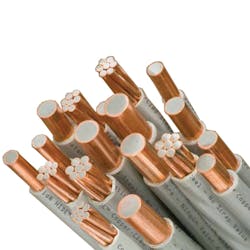Copper theft has gotten worse, not better, in recent years, and a major target has been electrical power substations and utility poles. Recent FBI reports detail the problem, and federal legislation attempts to stem the tide.
In May, the FBI reported that two of three defendants charged with stealing 520 lbs. of copper wire from railroad track power lines near Wells, Nev., in July 2011 had been sentenced to one-and-a-half years in federal prison. The theft caused about $5,000 in damage and disabled the railroad signal system used jointly by Union Pacific and Amtrak. According to the court records, after railroad officials detected a signal line problem, a railroad signal maintainer found railroad power lines hanging down near the tracks and estimated that about five pole lengths of wire had been stolen.
In June, the FBI reported that seven people had been indicted in federal court for their roles in a conspiracy to steal copper from two dozen substations in Northeast Ohio. According to the indictment, the 24 substations have copper material around the base that facilitates the transmission of electricity. The defendants would “remove the copper material from the substation in a way that would minimize the risk of physical harm to the person cutting the wire or cable, [and] then unlawfully extracted the copper wire and materials from the substations, manually carrying it in garbage cans, duffel bags, contractor bags, and other containers to ‘staging areas.’ From there, the copper material was transported to scrap yards, where it was sold for cash.” The indictment details 25 copper thefts and five attempted thefts, and said defendants collectively sold the stolen copper for more than $15,000. Repairs to the substations will likely cost more than $100,000, according to the indictment.
A recent report on CNBC.com quotes Mike Adelizzi, president of the American Supply Association, a nonprofit group representing distributors and suppliers in the plumbing, heating, cooling and industrial pipe industries. "There was a perception that copper theft slowed down after the recession, and the rise in commodity prices seemed to ease off," Adelizzi said. "But that's not the case. The theft has only been growing."
The typical theft is usually around 200-300 ft. of copper wire, which is about $500 when sold for scrap, according to a spokeswoman for PSE&G, an energy company in northern New Jersey. In March, someone stole several 1,000 lb. spools of copper wire worth $68,000 from a PSE&G substation under construction in New Jersey.
To fight back, some utility companies are making power stations more physically secure, while others are choosing to use Copperweld wiring instead. This bimetallic electrical conductor, which has a steel core and copper on the outside, is made by Fushi Copperweld Inc., a Sino-American public company based in Beijing. Copperweld costs more, but doesn't have the same scrap value as regular copper wire, so companies hope its use will cut back on thefts.
A national bill, the bipartisan Metal Theft Prevention Act, S. 394, passed the U.S. Senate in June, but passage by the House is uncertain. The bill would make it a federal crime to steal certain metals, including copper, punishable by up to 10 years in prison. Scrap dealers would be required to keep detailed records of metal purchases, and sellers would have to prove they own the material or have the legal right to dispose of it.
About the Author
Renee Bassett
Managing Editor

Leaders relevant to this article:
